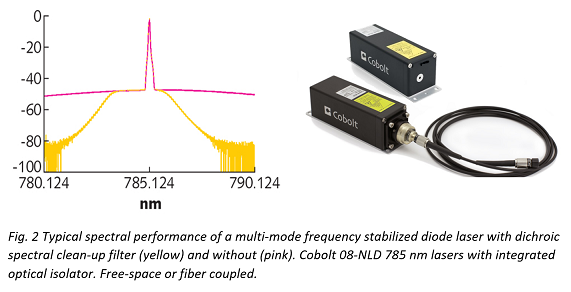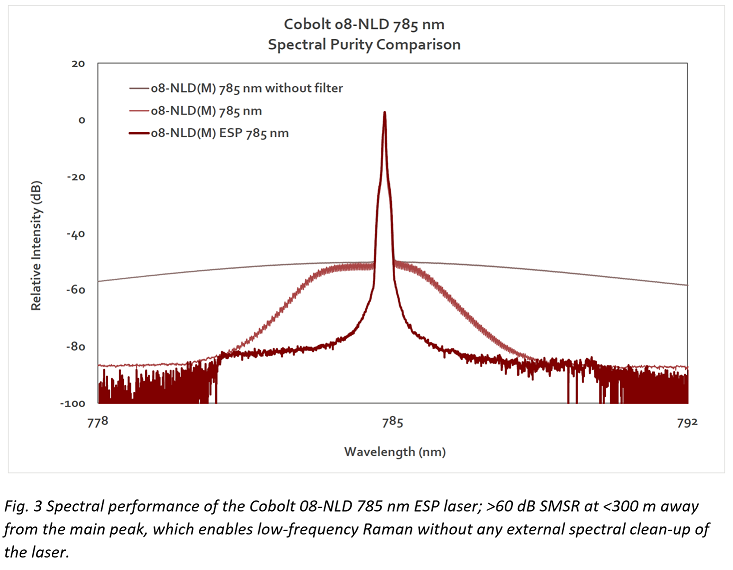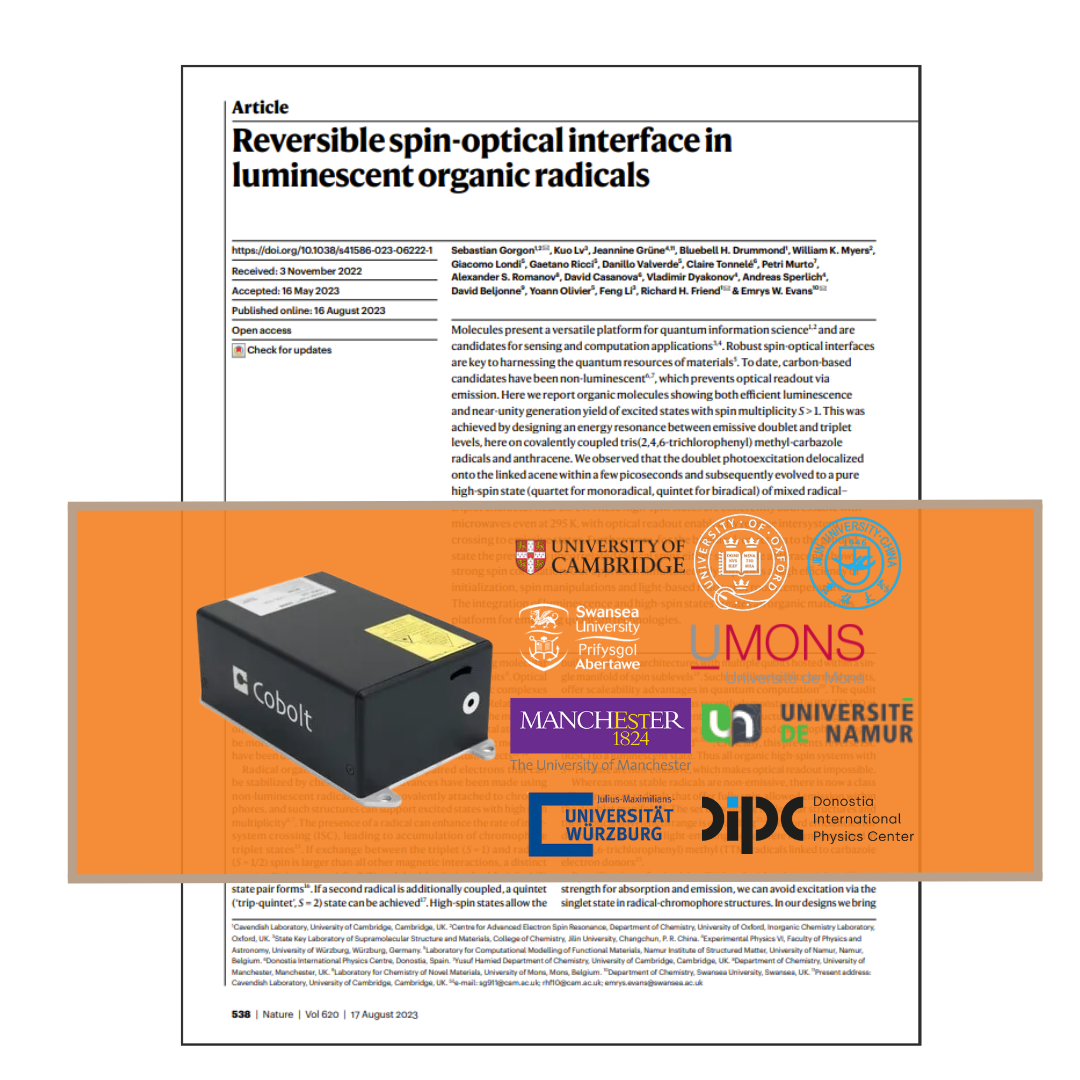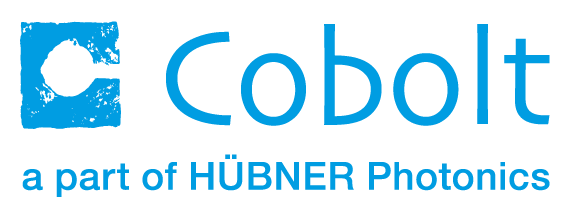7 May, 2021
Laser performance parameters
The most commonly used wavelength in Raman spectroscopy is 785 nm. It offers the best balance between scattering efficiency, influence of fluorescence, detector efficiency and availability of cost-efficient and compact, high-quality laser sources.
There is a number of different kinds of lasers available at 785 nm. They offer different performance and cost characteristics, which means a careful selection can be important to find the best solution for a particular Raman spectroscopy set-up.
Critical performance parameters are:
- Spectral bandwidth
- This should be less than a few 10s of pm in order not to limit the resolution of the system. In some high resolutions applications a linewidth of much less than that can be required
- Spectral purity (or side-mode suppression ration – SMSR):
- Of the illumination source should be at least better than 60 dB in the spectral region where Raman peaks are to be detected
- Wavelength stability:
- Must be low, in the order of few pm, both over time and temperature in order not to limit the resolution of the system
- Mode:
- For high resolution imaging applications it is important with a high quality TEM00 transversally single-mode beam profile. (For probe-based systems multimode beams work, as long as they can be efficienly coupled into fibers of 50-200 µm core sizes.)
Technologies for lasers around 785 nm
There are basically 4 different types of lasers available at 785 nm, all having their own strengths and weaknesses when it comes to their use or Raman spectrscopy:
- 785 nm diode lasers:
- Standard Fabry-Perot type semiconductor lasers typically have spectral bandwidths of over 1nm are therefore usually not suitable for Raman spectroscopy applications.
- 785 nm DFB diode lasers:
- These are single transversal mode semiconductor emitters with a DBR (distributed bragg reflector) structure integrated with the gain structure on the chip itself. They can be purchased as a single laser chip or packaged ready for use. They can offer very narrow linewidths and even single-frequency performance but are limited in output power to a few 10s of mW. SMSR is normally only 30-50 dB even several nm form the main peak, meaning that a spectral clean-up filter must be used to make them suitable for Raman spectroscopy. The compact size makes them suitable for small hand-held systems.

- 785 nm Narrow Linewidth Diode lasers (NLD) or frequency stabilized diode lasers:
- Frequency stabilized diode lasers are based on high power Fabry-Perot semiconductor diode lasers with an external grating structure (typically a VBG – Volume Bragg grating) for frequency locking the emission to a narrow linewidth. The approach works with both single transversal (TEM00) and multi transversal mode emitters and results in laser emission with linewidths of a few 10s of pm down to single-frequency performance. Output powers range from just over 100 mW for single transversal mode lasers to Watt level lasers for multi mode. Like with the DBR lasers it is usually required to combine these lasers with a spectral clean-up filter to achieve sufficient SMSR for high quality Raman spectroscopy results. The Cobolt 08-NLD series is based on this technology and include both single-transversal mode TEM00 lasers with up to 120 mW power and multimode lasers with up to 500 mW output power. All Cobolt 08-NLD lasers have dichroic spectral clean-up filters integrated in the design and comes with an integrated optical isolator as standard, making the lasers insensitive to optical feedback. All Cobolt 08-NLD lasers can also be fiber-coupled into single-mode polarization maintaining (SM/PM) fibers or multimode fibers.

- 785 nm frequency stabilized lasers with Enhanced Spectral Purity (ESP):
- The frequency stabilized laser diodes performance mentioned in 3. can be further improved. Not in terms of reducing the linewidth but in terms of increasing the spectral purity. The spectral purity is important in high resolution Raman since the Raman signal is inherently weak. If the background spectrum is too high then the Raman signal cannot be seen. With the dichroic spectral clean-up filters in the standard Cobolt 08-NLD lasers it is possible to achieve a spectral purity of >60dB is at around 1-2 nm from the main peak, which is sufficient for detection of Raman shifts in the finger-print spectral region of 200-40000 cm-1. However, low-frequency Raman applications, in the region <200 cm-1, require a high side-mode suppression ratio (SMSR) a few 100 pm from the main peak. The Cobolt 08-NLD ESP lasers are based on a patent pending technology which enables a spectral purity of >60 dB as close as 300 nm away from the laser peak. These lasers are have Enhanced Spectral Purity (ESP) are very suitable for Raman spectroscopy with spectral shifts in the low-frequency or THz region.

More resources
Explore our Publications for practical insights on how our customers are leveraging the power of our lasers in their projects.
Customer publications
Product line: Cobolt
Application: Quantum
Wavelength: 532 nm, Tunable VIS
New Discovery in Quantum Technology: Shining Light on Organic Molecules
scientists have developed organic molecules that can glow brightly and be used in advanced quantum technologies
Customer publications
Product line: Cobolt
Application: Quantum
Wavelength: 594 nm, Femtosecond 1um
Nanographene Research Unveils Highly Soluble Quantum Dots
Researchers have unveiled a new family of nanographene materials with the help of the Cobolt Mambo 594 nm laser.
Customer publications
Product line: Cobolt
Application: Fluorescence microscopy
Wavelength: 488 nm
New Breakthrough in Cellular Imaging with the Cobolt 06-MLD Laser
Scientists at the KTH Royal Institute of Technology in Sweden, and Calico Life Sciences, have made significant strides in cellular imaging.






